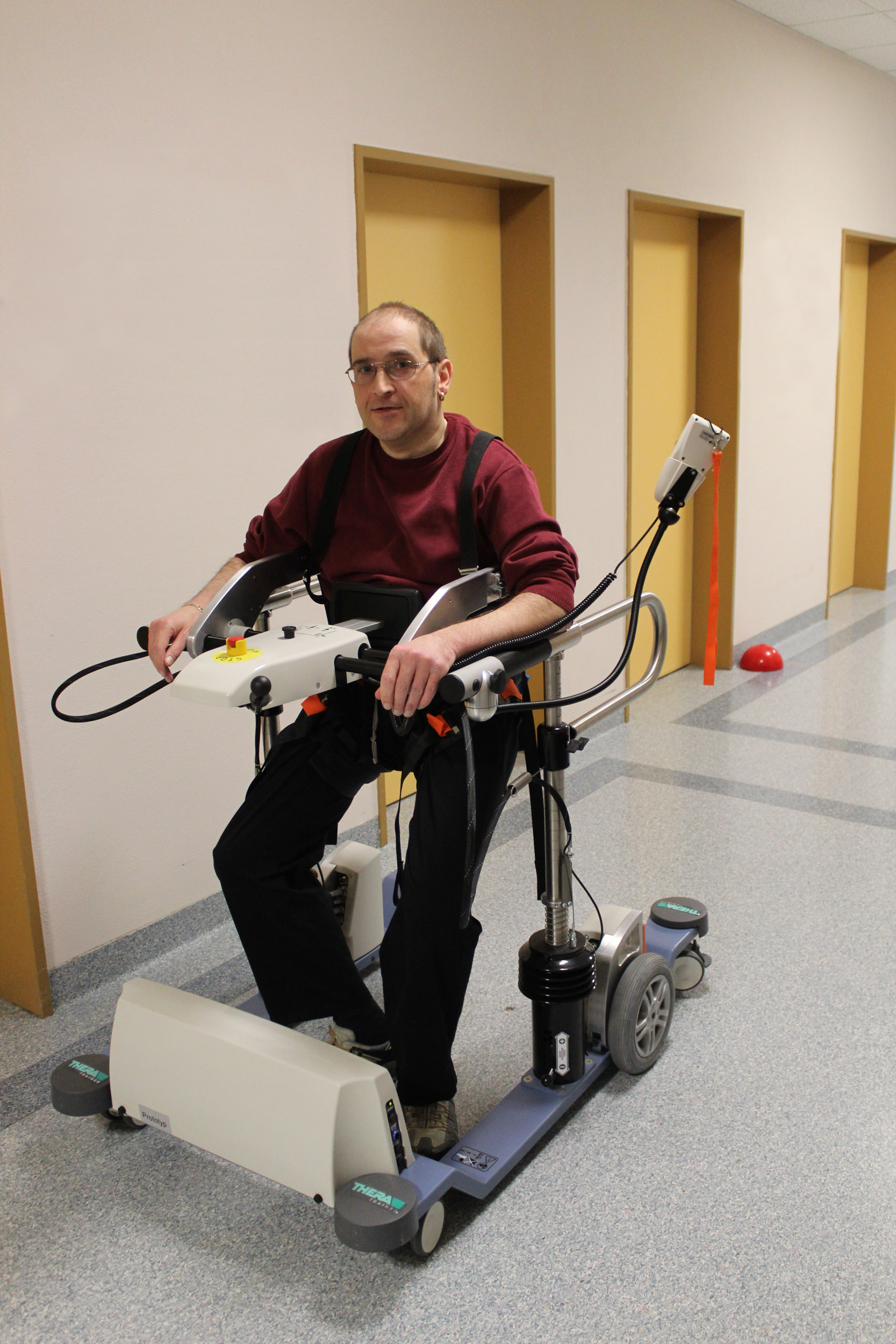
A clinical study compares robot-assisted gait training using the THERA-Trainer e-go with conventional physiotherapy in advanced Parkinson’s patients. Both methods improved motor skills and quality of life, with the robotic approach showing benefits in more subtests.

Gait disturbance is one of the most important handicaps in everyday life of patients with idiopathic Parkinson’s disease (IPD) and therefore in the focus of activating therapies. The aim of this study was to compare the efficacy of gait training using a newly developed gait robot (THERA-Trainer e-go) with conventional gait training of the same inten- sity and frequency with respect to various representative spatio-temporal gait parameters, general motor skills and quality of life in patients with advanced IPD.
ixty-six patients between 52 and 86 years of age with moderate to advanced IPD (Hoehn and Yahr, stages 3 and 4) were randomized en bloc to an intervention group and a control group according to age, sex, and disease stage. All patients received 15 treatment units of 30 minutes duration each for three consecutive weeks. Out of 52 evaluable patients, 23 patients received gait training with the THERA trainer e-go, and 29 patients had conventional gait training with a physiotherapist. The patients were examined prior to and after the special therapy phase. Primary outcome variables were the summary score of the Unified Parkinson’s Disease Rating Scale (UPDRS), part III, and the time needed for the 10 meter walk test (10-MWT). Secondary outcome variables were the Parkinson’s Disease Questionnaire (PDQ-39), a variation of the 10-MWT, where the patient walks 3 meters, turns around and walks back, the modified Romberg test, the slalom parcours, the functional reach test, the timed “up & go” test and the tandem walk.
Both gait training with the “THERA trainer e-go” and conventional gait training resulted in clinically relevant and statistically significant improvements in the primary outcome variables: UPDRS –16.61 vs. –16.41 points (each p < 0.001)), 10-MWT + 0.14 m/s vs. + 0.17 m/s (each p < 0.05). No statistically significant differences were found between the treatment regimens. With respect to secondary outcome variables, patients in the “THERA-Trainer e-go” group had improvements in 5 of 7 subtests, i. e., clearly more than patients with conventional gait training.
The study shows that robot-assisted gait training is a promising new tool in neurological rehabilitation in patients with IPD for improving their general motor function, various spatio-temporal gait parameters and disease-related quality of life. Thus, it represents a supplement to the cur- rent therapeutic spectrum, especially in advanced Parkinson’s syndromes.
neurodegeneration, idiopathic Parkinson’s disease, gait training, gait robot, locomotion, activating therapies

- Angela Schmitt, Fachklinik Ichenhausen, Abt. Neurologie & Neurorehabilitation, Krumbacher Straße 45, 89335 Ichenhausen
Related contents
Find related exciting contents in our media library.
Meet our specialists.
Are you interested in our solutions? Schedule a meeting with a Consultant to talk through your strategy and understand how TEHRA-Trainer can help you to advance rehabilitation.
You need to load content from reCAPTCHA to submit the form. Please note that doing so will share data with third-party providers.
More InformationYou are currently viewing a placeholder content from Turnstile. To access the actual content, click the button below. Please note that doing so will share data with third-party providers.
More Information